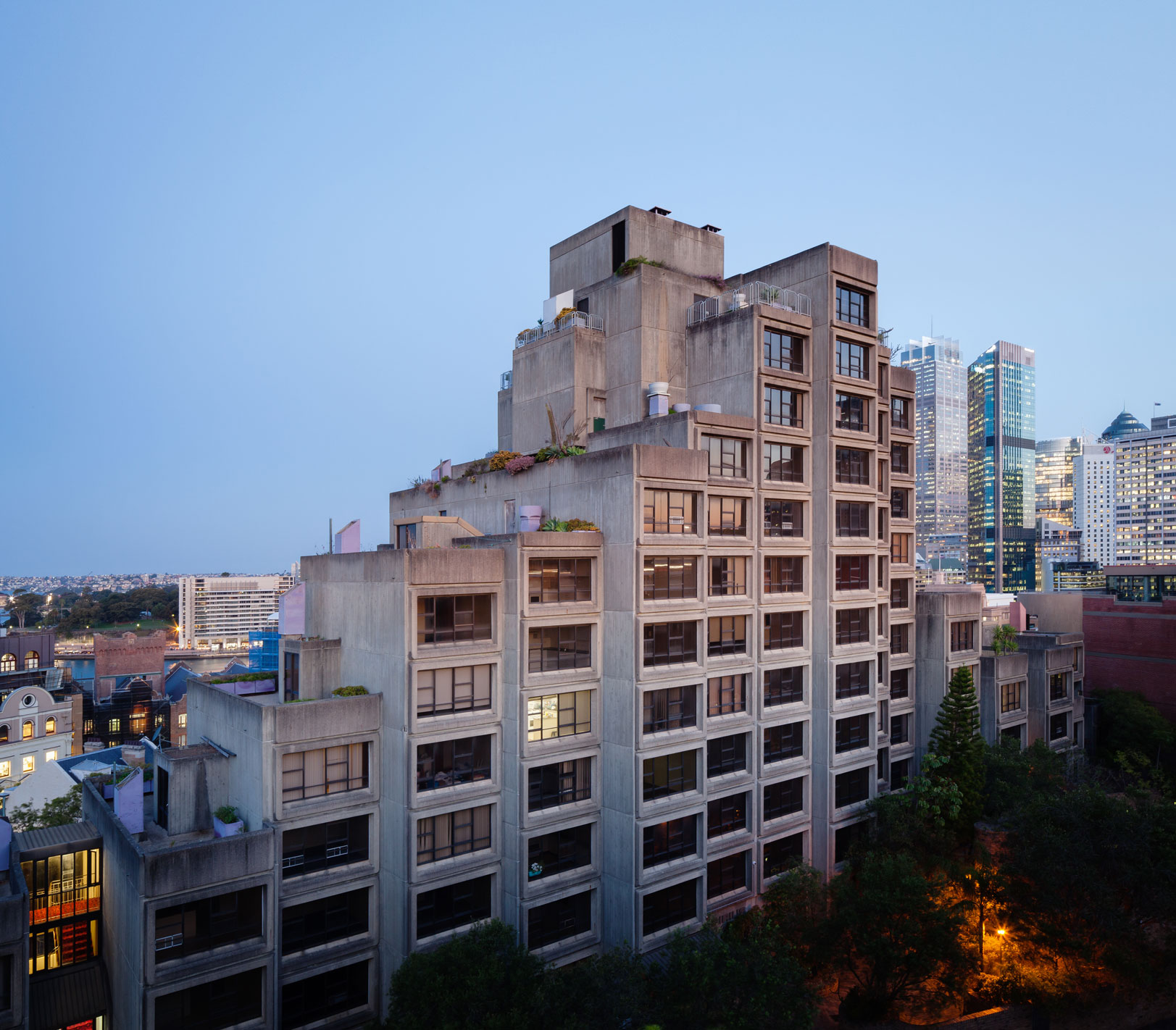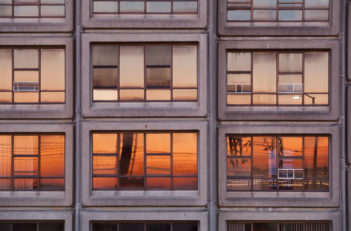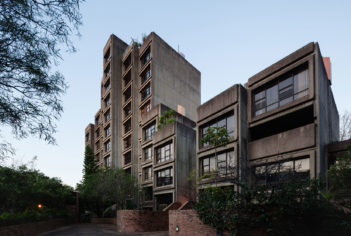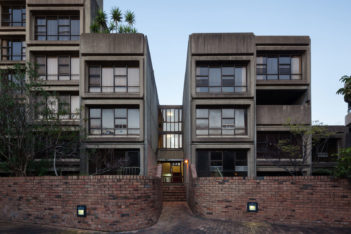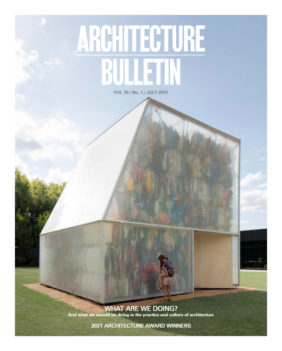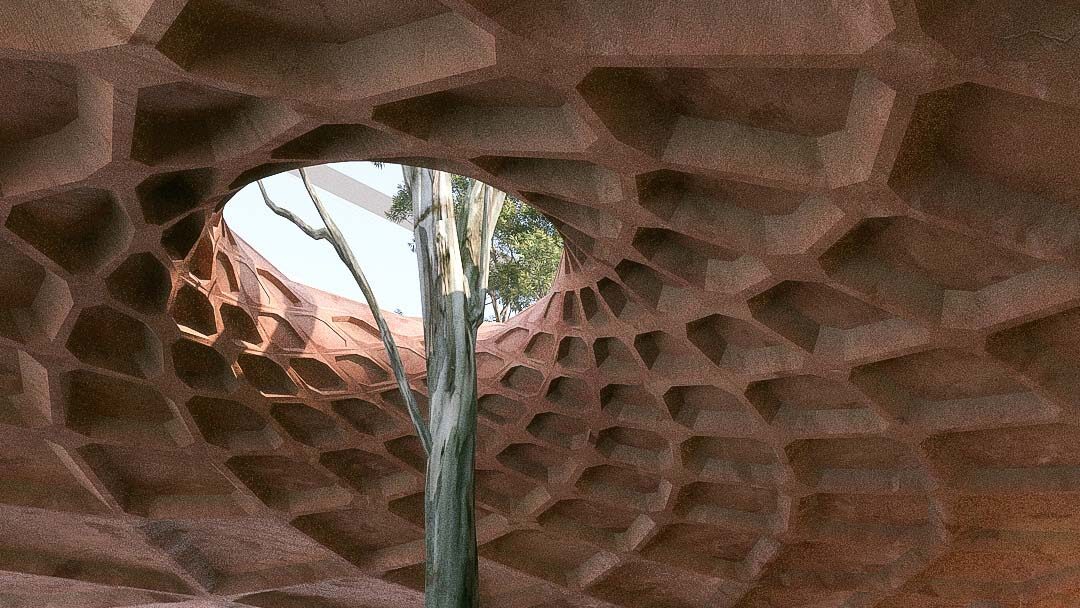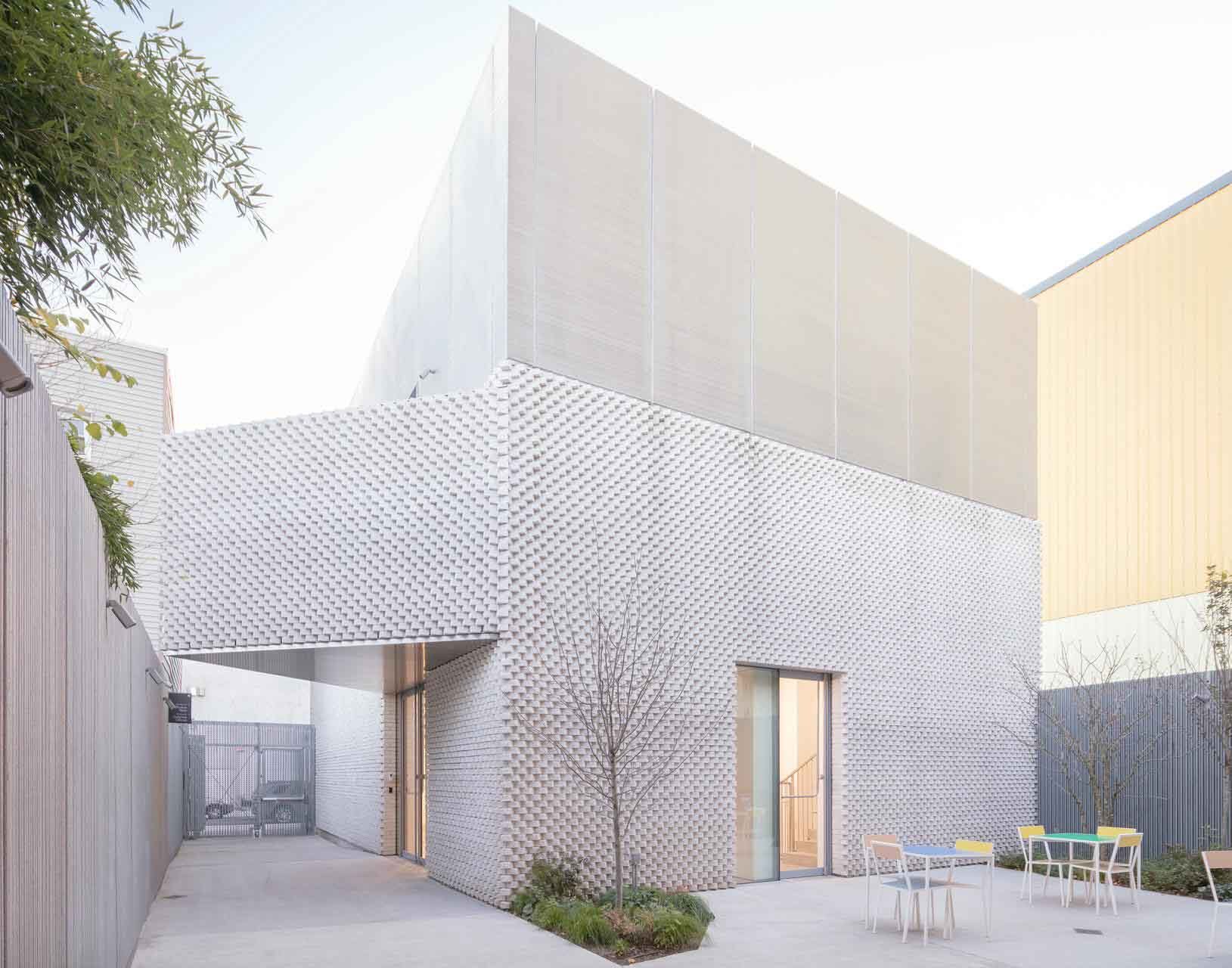Sirius: Architecture Saved, Heritage Lost
At Sydney-Open, a livestream panel discussion chaired by Adam Haddow on new heritage asked what buildings saved from demolition have changed the city for the better. Panelist Richard Francis-Jones put forward the Sirius building but also suggested that while the building was saved something more important has been lost.
The Sirius social housing project cannot be considered or properly valued outside the incredible history and narrative of its making. It is perhaps a greater social and cultural project than it is architectural. Its heritage is as much about meaning and use as the skillful composition of brutalist precast concrete frames.
Sirius was raised out of the demolished public housing terraces of the Rocks, a new home for a displaced community and a monument of social atonement and equity. Ironically this architecture of compensation and repair broke the delicate urban form and scale of the Rocks in pursuit of an only slightly adjusted modernist paradigm of urban renewal that was the cause of the original damage.
It is a remarkable project and a remarkably poetic story.
It embodies the community and political struggle of the Green Bans, the urban struggle between modernist renewal and the historic city, and also embodies the noble project of modernity directed towards social emancipation and equity. But now emptied of its community, of its social purpose, of its life, and true significance, it has become a mere shell. What have we preserved and what have we lost? Does it actually matter if any future repurposing of this monument of social atonement is a good or bad work of architectural adaptation if the soul of the building has already left?
The story of Sirius began in the late 1960s when the historic Rocks with its tight-knit terraces and narrow streets, was planned to undergo an ambitious urban regeneration that would epitomise the modernist post-war paradigm of healthy, equitable living. Residential towers and gardens with light, view, and fresh air, were to represent a modern 20th century ideal at the edge of our Harbour. This new urban vision was perhaps best expressed, in the proposal of 1963 by Sydney’s greatest exponent of modernism Harry Seidler.
The problem, however, was not the quality of the architecture, but the social and cultural cost of such over-simplified modernist paradigms that were fracturing communities and historic urban form in cities throughout the world.
At the Rocks, demolition had already begun and local residents were displaced from the terraces on George, Playfair, and Atherden Streets. However, this social displacement and urban transformation was dramatically halted through public protests, union action and, Green Bans championed by the NSW Builders Labourers Federation (BLF) leader and environmentalist Jack Mundey, who passed away in May last year.
Following the success of this community action, the Sirius project was to rise from the rubble, mend the damage and heal the wounds, by providing new accommodation for the displaced residents. Designed by the NSW Housing Commission and led by Tao Gofers, Sirius was a great contrast to the terrace house typology of the Rocks. Vertically stacked up, open, precast concrete boxes of individual apartments offering views, natural light and roof gardens. Paradoxically, it was a late 1970s variation on the form of the 1960s modernist urban regeneration that had caused the destruction in the first place.
Part of its success perhaps, is its exceptionalism in this tight-knit historic urban form and community, which lets us appreciate the contrast and complement of the urban-social visions.
But its cultural significance is in giving witness to the great social urban drama that was played out on the front stage of our City at Circular Quay. An architectural monument of social atonement giving pride of place and the best views of Harbour and Opera House to vulnerable members of our community displaced by haste and ignorance of modern ‘progress’.
Perhaps this was never going to last as values and political priorities changed and the most privileged parts of our cities were inevitably claimed by the socially privileged. But in January 2018 when Myra Demetriou, the last resident of Sirius left and the building sold, something essential to the heart and meaning of the project also left.
Architecture is not separate from the aspirations of its making and the life and values it embodies. These are integral to its cultural worth and heritage, this is particularly the case with Sirius which bears witness to such an important social urban narrative, played out dramatically at centre stage in our city but also occurring in our peripheral vision all over New South Wales.
Sirius embodied a great and important story, in its scale, form, geometry and material, but most of all in its life and content. Surely no amount of carefully considered contemporary interpretation and skillful design adaptation can compensate for a loss, fatal to the meaning, purpose and essence of the architecture.
Emptied of its social meaning, of its soul, does it actually matter what we now do to the shell?
Richard Francis-Jones studied and taught architecture in Australia and United States, he is design director of fjmtstudio, former NSW chapter president, former creative director of the Australian Institute of Architects National Architecture Conference, a Life Fellow and an Honorary Fellow of the American Institute of Architects.
This article was written in response to the NSW Chapter Editorial Committee’s call for contributions in a context of crisis, seeking perspectives on What are we doing?
